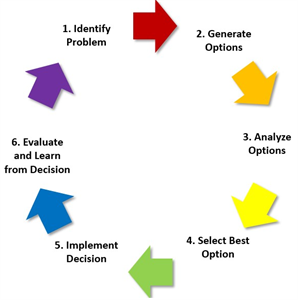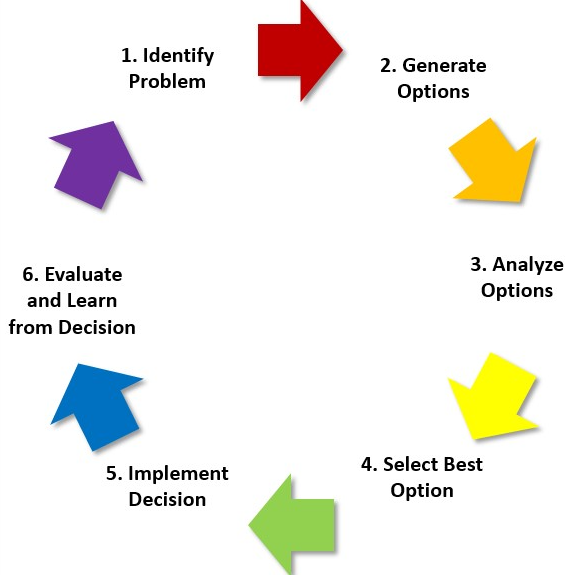6 Steps to making reasonable decisions

Have you ever made a decision about a program or project that turned out to be an incorrect decision? As a program manager, we not only have to make decisions during the implementation of a project or program, but also guide our teams in making decisions.
Here is a framework to help you make decisions based on data and objective criteria. I have heard of the RICIE model in a strategic management course and found it to be really helpful for absorbing the necessary steps for making rational decisions. Here, I am proposing the RISCIE model. RISCIE has six steps:

- Identify the problem/opportunity:
In this stage, identify the opportunity or problem you want to solve. If it is a problem, identify the root cause of the problem. Don't mistake symptoms for problems.
Example: Team members are consistently missing deadlines. This is a symptom of poor planning, unclear requirements, or team members lacking experience.
- Define solution criteria:
Most of the time, we jump to solutions instead of defining the criteria for the solution. To choose the best solution, make a list of criteria that the solution must meet.
Example: Prioritize criteria: The solution must be implemented within 3 months to meet the launch date or must have a price below a certain amount.
- Explore solutions:
Analyze feasible solutions that match the solution criteria. Don't stop at just one solution - explore multiple solutions.
- Choose a prioritized course of action:
In this step, evaluate all solutions based on each criterion identified in [Step 2]. Choose the solution that meets most of the criteria. If multiple solutions meet all criteria, evaluate if it is feasible to conduct a quick trial or test of each solution. This will uncover any pros/cons of the solutions that were missed in [Step 3].
- Implement the prioritized course of action:
The next step is to implement the chosen solution. Ensure that any criteria for the solution identified from the outset are truly being met by the solution.
- Evaluate results and monitor as needed:
Finally, evaluate the results. Ensure all KPIs are being measured and operated according to the solution. Conduct a lessons learned session to improve future decision-making.